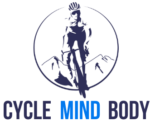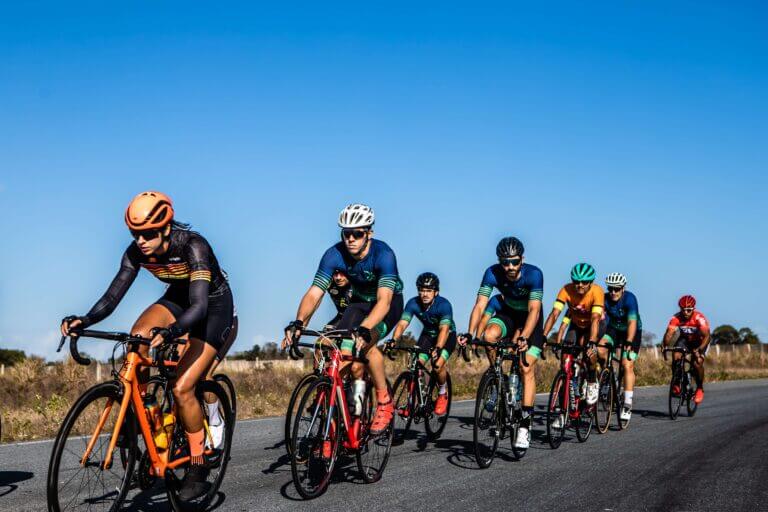As a cyclist, you understand the importance of improving your performance on the bike. While focusing on cycling-specific training is crucial, incorporating strength training exercises into your routine can take your cycling performance to the next level.
Not only do these exercises help build power on the bike, but they also play a vital role in preventing injuries.
In this comprehensive guide, we will explore the best strength training exercises for cyclists, providing you with the knowledge and tools to enhance your cycling abilities. From lower body strength exercises to core and stability workouts, and upper body and arm exercises, we’ll cover it all.
Understanding the Benefits of Strength Training for Cyclists
Before we delve into specific exercises, it’s important to understand the science behind strength training and its impact on cycling performance. Strength training involves resistance exercises that target various muscle groups, aiming to improve strength, power, and endurance.
When it comes to cycling, strength training offers numerous benefits. First and foremost, it increases your overall power output. Stronger muscles allow you to pedal more efficiently, generating more force and speed on the bike.
Additionally, strength training improves muscular endurance, enabling you to sustain high-intensity efforts for longer durations.
Another advantage of strength training for cyclists is injury prevention. Cycling is a repetitive activity that can lead to muscle imbalances and overuse injuries.
By incorporating strength exercises into your routine, you can correct these imbalances, strengthen your supportive muscles, and reduce the risk of injury.
Now that we understand the benefits, let’s dive into the best exercises to achieve these outcomes.
Lower Body Strength Exercises
Squats
Squats are a foundational exercise that targets the muscles of your lower body, including your quadriceps, hamstrings, glutes, and calves. By performing squats, you develop leg strength and stability, which are essential for powerful pedal strokes and maintaining control on the bike.
To perform a squat:
- Start by standing with your feet shoulder-width apart, toes slightly turned out.
- Engage your core, keep your chest up, and begin to lower your body by bending your knees and pushing your hips back.
- Descend until your thighs are parallel to the ground, making sure your knees track over your toes.
- Push through your heels to return to the starting position, fully extending your hips and knees.
Squats can be modified based on your fitness level. Beginners can start with bodyweight squats, while more advanced individuals can incorporate barbells or dumbbells for added resistance. Aim for three to four sets of 8-12 repetitions.

Deadlifts
Deadlifts are a compound exercise that targets multiple muscle groups, including your glutes, hamstrings, lower back, and core. They are highly effective for building overall strength and power, translating directly to improved cycling performance.
To perform a deadlift:
- Stand with your feet hip-width apart, with the barbell in front of you, close to your shins.
- Bend at the hips, keeping your back straight and core engaged, and grip the barbell with an overhand or mixed grip.
- Push through your heels, engage your glutes, and lift the barbell while extending your hips and knees.
- Maintain a neutral spine and stand tall, then lower the barbell back down to the starting position with controlled movement.
Proper form is crucial for deadlifts to avoid injury. If you’re new to deadlifting, consider seeking guidance from a qualified trainer. Aim for three to four sets of 6-10 repetitions.
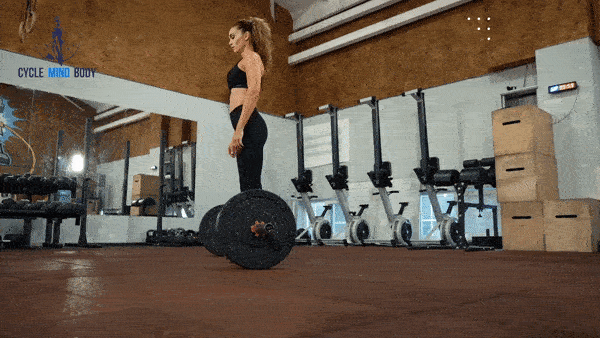
Lunges
Lunges are a unilateral exercise that focuses on individual leg strength and stability. They target your quadriceps, hamstrings, glutes, and hip stabilizers, addressing muscle imbalances and enhancing pedaling efficiency.
To perform lunges:
- Stand tall with your feet together and take a step forward with one leg, maintaining an upright posture.
- Lower your body by bending both knees until your front thigh is parallel to the ground, with your rear knee hovering just above the floor.
- Push through your front heel to return to the starting position, engaging your glutes and quadriceps.
Lunges can be performed with bodyweight or by holding dumbbells for added resistance. Aim for three to four sets of 10-12 repetitions per leg.
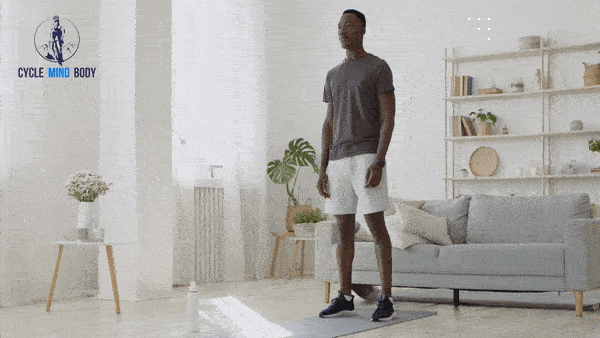
Core and Stability Exercises
Planks
Planks are a fundamental core exercise that targets your deep abdominal muscles, obliques, and lower back. A strong core improves balance, stability, and power transfer on the bike, enhancing your cycling performance.
To perform a plank:
- Start by assuming a push-up position, with your forearms resting on the ground and elbows aligned under your shoulders.
- Engage your core and maintain a straight line from your head to your heels.
- Hold the position for the desired duration, keeping your abdominal muscles contracted.
Planks can be modified based on your fitness level. Beginners can start with forearm planks, while more advanced individuals can try variations like side planks or planks with leg lifts. Aim to hold the plank for 30 seconds to one minute and gradually increase the duration over time.
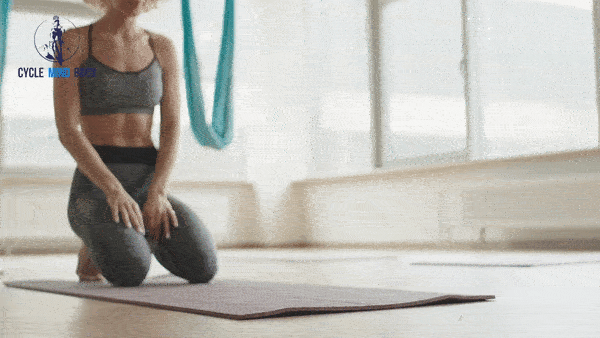
Russian Twists
Russian twists are a rotational core exercise that targets your obliques and improves rotational strength. This exercise helps with stability and control while cycling, especially during cornering and bike handling.
To perform Russian twists:
- Sit on the ground with your knees bent and your feet lifted a few inches off the floor.
- Lean back slightly while maintaining an engaged core.
- Rotate your torso to one side, touch the ground with your hands or a weight, and then rotate to the opposite side.
You can perform Russian twists with or without added weight, such as a medicine ball or a dumbbell. Start with three to four sets of 10-15 repetitions per side.
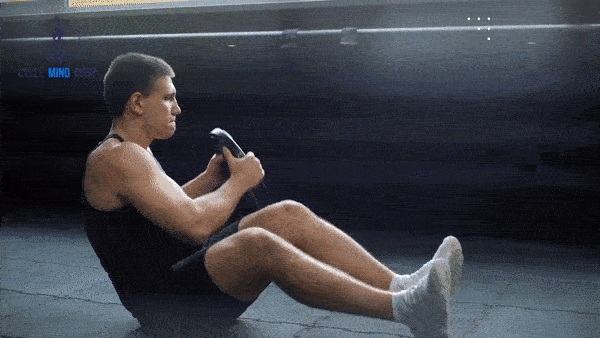
Medicine Ball Exercises
Medicine balls are versatile tools for core and stability training. They can be used for various exercises, such as twists, throws, and chops, which engage multiple muscle groups simultaneously.
To perform medicine ball exercises, you can:
- Stand with your feet shoulder-width apart, holding the medicine ball at your chest, and twist your torso from side to side.
- Sit on the ground with your knees bent and feet lifted, holding the medicine ball with both hands, and twist your torso while tapping the ball to the ground on each side.
- Assume a lunge position with one leg forward, holding the medicine ball in both hands, and rotate your torso while lowering the ball diagonally across your body.
By incorporating medicine ball exercises into your routine, you can improve your bike handling skills, strengthen your core, and reduce the risk of crashes.
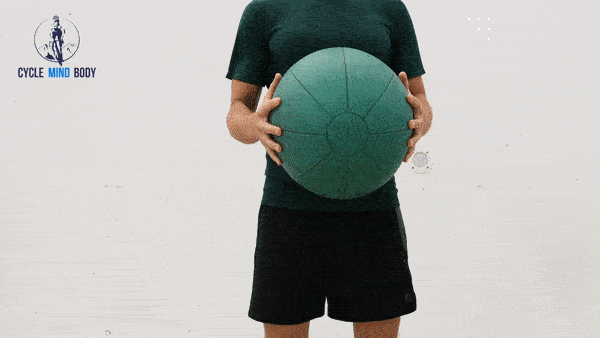
Upper Body and Arm Exercises
Push-Ups
Push-ups are a classic exercise that targets your chest, shoulders, triceps, and core. They improve upper body strength and stability, which are essential for maintaining proper cycling posture and control.
To perform a push-up:
- Start in a high plank position, with your hands slightly wider than shoulder-width apart and your body in a straight line.
- Lower your body by bending your elbows while keeping them close to your sides.
- Push through your palms to extend your elbows and return to the starting position.
Push-ups can be modified based on your fitness level. Beginners can start with knee push-ups, while more advanced individuals can perform standard push-ups or try variations like wide-grip or diamond push-ups. Aim for three to four sets of 8-12 repetitions.

Bent-Over Rows
Bent-over rows primarily target your back muscles, including the lats, rhomboids, and rear delts. Additionally, they engage your biceps and forearms, contributing to overall upper body strength and posture.
To perform bent-over rows:
- Stand with your feet hip-width apart, holding a dumbbell in each hand.
- Hinge forward at the hips, keeping your back straight and core engaged.
- Bend your elbows and pull the dumbbells towards your chest, squeezing your shoulder blades together.
- Lower the dumbbells back down with control to complete one repetition.
Maintaining proper form throughout the exercise is crucial to avoid strain or injury. Aim for three to four sets of 8-12 repetitions.
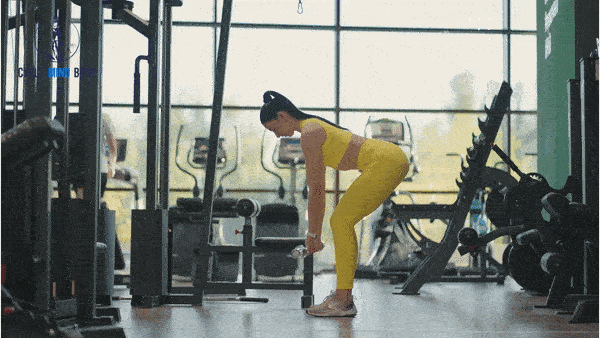
Overhead Press
The overhead press targets your shoulders, triceps, and upper back muscles. Strong shoulders and arms contribute to better overall cycling performance and control, especially during climbs and sprinting.
To perform the overhead press:
- Stand with your feet shoulder-width apart, holding a dumbbell in each hand at shoulder level.
- Engage your core, keep your back straight, and press the dumbbells overhead until your arms are fully extended.
- Lower the dumbbells back to shoulder level with controlled movement to complete one repetition.
Maintain proper form throughout the exercise and avoid arching your back excessively. Aim for three to four sets of 8-12 repetitions.
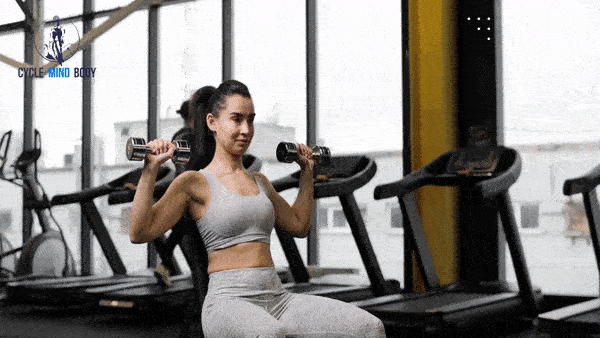
Strength Training During the Off-Season and Cycling Racing Season
Strength training plays a significant role in a cyclist’s training program throughout the year. However, the emphasis and frequency of strength training can vary during different training periods, such as the off-season and the cycling racing season.
During the Off-Season
The off-season provides an excellent opportunity for cyclists to focus on building strength and addressing any imbalances or weaknesses. It is a time when cycling volume and intensity are generally lower, allowing for greater emphasis on strength training.
1. Frequency: During the off-season, aim to incorporate strength training two to three times per week. This frequency allows for adequate recovery and adaptation while providing a solid foundation for the upcoming cycling season.
2. Focus on Building Strength: The off-season is the ideal time to focus on progressive overload and increasing the intensity of your strength training exercises. Gradually increase the resistance, whether it’s through adding weight, progressing to more challenging variations, or increasing the number of repetitions and sets.
3. Comprehensive Training: Design your off-season strength training program to target all major muscle groups, emphasizing exercises that improve overall strength and stability. This includes lower body exercises like squats, deadlifts, and lunges, core exercises such as planks and Russian twists, and upper body exercises like push-ups and bent-over rows.
4. Allow Recovery: While it’s important to challenge yourself during the off-season, remember to allow adequate recovery time between strength training sessions. This allows your muscles to repair and adapt to the training stimulus.
During the Cycling Racing Season
As the cycling racing season approaches, the emphasis shifts towards maintaining strength gains while accommodating the increased demands of cycling-specific training and competitions.
1. Frequency: During the racing season, aim to maintain strength gains by reducing the frequency of strength training to one to two times per week. This allows for adequate recovery and prioritizes cycling-specific workouts.
2. Maintenance and Injury Prevention: The primary goal during the racing season is to maintain the strength and stability developed during the off-season while minimizing the risk of injuries. Focus on exercises that target key muscle groups used in cycling, such as the lower body, core, and upper body.
3. Prioritize Recovery: With the increased demands of cycling training and racing, recovery becomes paramount. Ensure that you have adequate rest days between strength training sessions and allow enough time for recovery and adaptation.
4. Specificity: During the racing season, consider incorporating more functional exercises that mimic the movements and demands of cycling. This can include exercises that involve explosive power, balance, and stability.
Remember, the specific training approach may vary depending on individual factors such as experience, goals, and the race calendar. It’s important to listen to your body, work with a qualified coach or trainer, and adjust your strength training program accordingly to meet your unique needs.
By appropriately adjusting the frequency and focus of your strength training during the off-season and cycling racing season, you can strike a balance between building strength, preventing injuries, and optimizing your cycling performance.

Injury Prevention and Recovery Strategies
In addition to performing strength training exercises, it’s crucial to prioritize injury prevention and recovery strategies. Here are some tips to keep in mind:
- Gradual Progression: Start with lighter weights and gradually increase the load as your strength improves. This approach helps prevent injuries from overexertion.
- Proper Form: Always prioritize proper form and technique during exercises. Incorrect form can lead to strain or injury. If you’re unsure about proper technique, seek guidance from a qualified trainer.
- Balanced Training: Ensure that your strength training program targets all major muscle groups to prevent muscle imbalances and promote overall stability.
- Stretching and Flexibility: Incorporate stretching exercises, such as dynamic warm-up stretches before your workouts and static stretches after your workouts. Flexibility helps improve joint mobility and prevents tight muscles.
- Foam Rolling: Utilize a foam roller to release tension and tightness in muscles. Foam rolling aids in muscle recovery and enhances mobility.
- Rest and Recovery: Allow adequate rest days between strength training sessions to promote muscle repair and growth. Listen to your body and avoid overtraining.
FAQ About Strength Training For Cyclists
How often should I incorporate strength training into my cycling routine?
Aim for two to three strength training sessions per week, with at least one rest day in between sessions.
Can strength training make me bulky as a cyclist?
No, strength training alone will not make you bulky. It helps improve power and performance without adding excessive muscle mass.
Is it necessary to lift heavy weights for strength training as a cyclist?
Lifting heavy weights is beneficial for building strength, but it’s not the only approach. Focus on proper form and gradually increase the resistance over time.
Can strength training help me climb hills better?
Yes, strength training improves overall power and muscle endurance, which can enhance your climbing ability.
Should I do strength training during the cycling season?
Yes, incorporating strength training during the cycling season helps maintain strength, prevent muscle imbalances, and reduce the risk of injuries.
